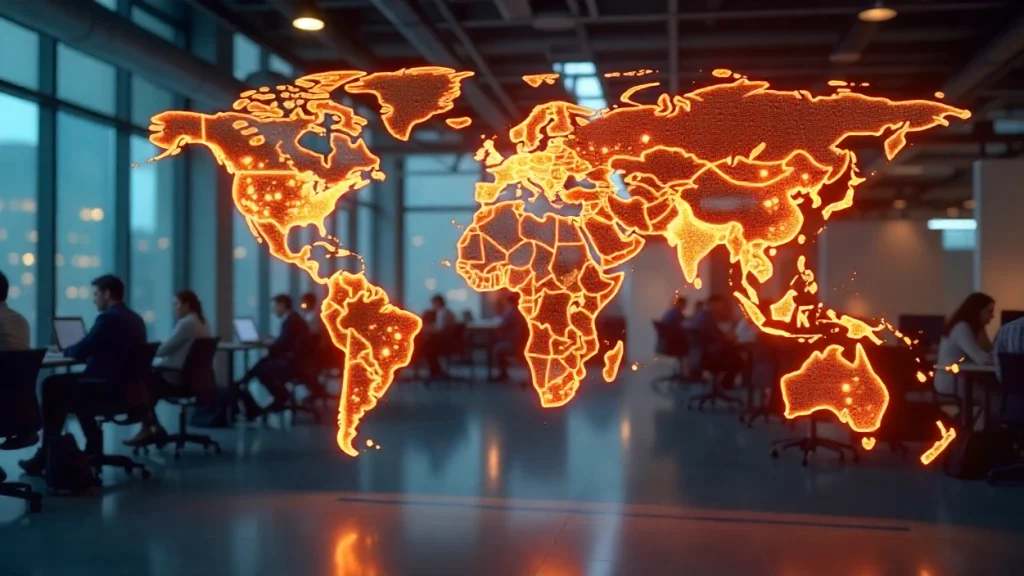A Fresh Lens on GCCs and Resilience
A few weeks ago, I had the opportunity to speak at the ET GCC Surge 2025—a two-day, invite-only GCC summit curated by The Economic Times with support from the Government of Kerala. The event was designed to move away from the usual conference noise and focus on meaningful conversations, genuine connections, and new ideas for GCC leaders and digital transformation partners.
Representing Digitide Ltd.,I had the privilege to share our pioneering work in building a Resilience Framework for GCC transformation and Innovation. The discussion—attended by over 150 GCC leaders—underscored one clear truth: GCCs are no longer back-office engines; they are the digital command centers of enterprise continuity.

In today’s volatile global environment, Global Capability Centers (GCCs) have evolved far beyond cost optimization engines. They are becoming the resilience nerve centers of modern enterprises—combining digital capability, scale, and agility to help organizations anticipate risks, orchestrate continuity, and accelerate transformation. This article explores how GCCs, empowered by Digitide’s Resilience Framework, are redefining the future of business resilience.
1. From Efficiency to Resilience
GCCs began as efficiency enablers—streamlining operations and reducing costs. But efficiency alone is not enough in an era of disruptions, from cyberattacks to global supply chain shocks.
Today, GCCs must serve as the first line of defense against volatility. They act as risk radars, scanning not just internal metrics but external signals like compliance changes, market shifts, and emerging threats.
Example: A financial services GCC in India runs continuous stress tests on mission-critical systems—turning compliance from a checkbox into a real-time resilience capability.
2. Risk Management at Scale
Modern enterprises face multidimensional risks—operational, cyber, financial, and reputational. GCCs are uniquely positioned to centralize risk intelligence and apply technology to manage it at scale.
· Cybersecurity: Establishing AI-powered Security Operations Centers (SOCs) for predictive threat response.
· Compliance: Automating global regulatory monitoring (GDPR, CCPA, ESG mandates).
· Operational Risks: Using analytics and ML to detect fraud and anomalies in real time.
· Predictive Risk Models: Integrating AIOps, digital twins, and advanced analytics to foresee potential disruptions.
Example: A GCC for a global insurer developed an AI compliance engine that auto-flags regulatory changes impacting business processes worldwide.
3. Business Continuity Orchestration
Resilience is tested when operations are disrupted. GCCs—with their distributed setups and digital-first mindset—are ideal for business continuity orchestration.
· Multi-Cloud DR: Ensures zero downtime through redundancy across cloud regions.
· Follow-the-Sun Support: Enables 24×7 operations, irrespective of geography.
· Hybrid Work Enablement: Makes remote continuity seamless and secure.
· Scenario Simulations: Runs resilience drills for cyberattacks, natural disasters, or supplier outages.
Example: During the pandemic, a retail GCC in Bangalore transitioned 90% of its workforce to remote mode within 72 hours, maintaining uninterrupted e-commerce operations globally.
4. Agility at Scale
GCCs are becoming agility engines—enabling rapid pivots in business models, customer experiences, and operating structures.
· Agile & DevSecOps: Embedding iterative delivery across functions.
· Automation at Scale: Using AI, RPA, and low-code platforms to accelerate transformation.
· Digital Innovation Pods: Encouraging experimentation and co-creation.
· Enterprise Agility: Expanding agile beyond IT—to HR, finance, and customer service.
Example: A healthcare GCC deployed AI chatbots within weeks of a service disruption—maintaining real-time engagement with patients.
5. Digital-First Resilience
The strongest resilience is architected into digital systems from day one. GCCs play a central role here.
· AI & Predictive Analytics: Anticipate disruptions and automate recovery.
· Cloud-Native Platforms: Build scalable, adaptive environments.
· Digital Twins & AIOps: Create self-healing ecosystems.
· Ecosystem Partnerships: Co-innovate with hyperscalers and startups.
Example: An automotive GCC leveraged digital twins to map supply chain disruptions, allowing instant recalibration of sourcing and logistics.
6. Culture and Talent as Core Enablers
Technology without resilient talent is brittle. Digitide’s philosophy emphasizes resilience by culture—where every employee becomes a change agent.
· Global Talent Hubs: Accessing diverse skill sets across cybersecurity, AI, and risk management.
· Resilient Leadership: Training for scenario planning and adaptive decision-making.
· Continuous Learning: Embedding lifelong digital learning in GCC DNA.
· Resilience Culture: Rewarding adaptability, innovation, and proactive risk awareness.
Example: A GCC in the Philippines built a “Resilience Academy” to upskill employees on cyber resilience and crisis response.
Digitide’s Resilience Differentiation
At Digitide Solutions Ltd., we view GCCs not as cost centers—but as strategic resilience platforms.
1. Risk & Continuity by Design – Embedding compliance, cyber resilience, and BC/DR into the GCC fabric.
2. AI-First Agility – Using predictive analytics and intelligent automation to anticipate and adapt.
3. Resilient Talent & Culture – Building GCCs powered by adaptive leadership and innovation-driven learning.
Conclusion: The GCC as the Resilience Nerve Center
Enterprises that reimagine their GCCs as resilience hubs—integrating risk intelligence, continuity, and agility—will not just survive uncertainty; they’ll thrive through it.
At Digitide Solutions, our mission is to help organizations transform their GCCs into future-ready resilience engines—capable of turning disruption into a competitive advantage.
